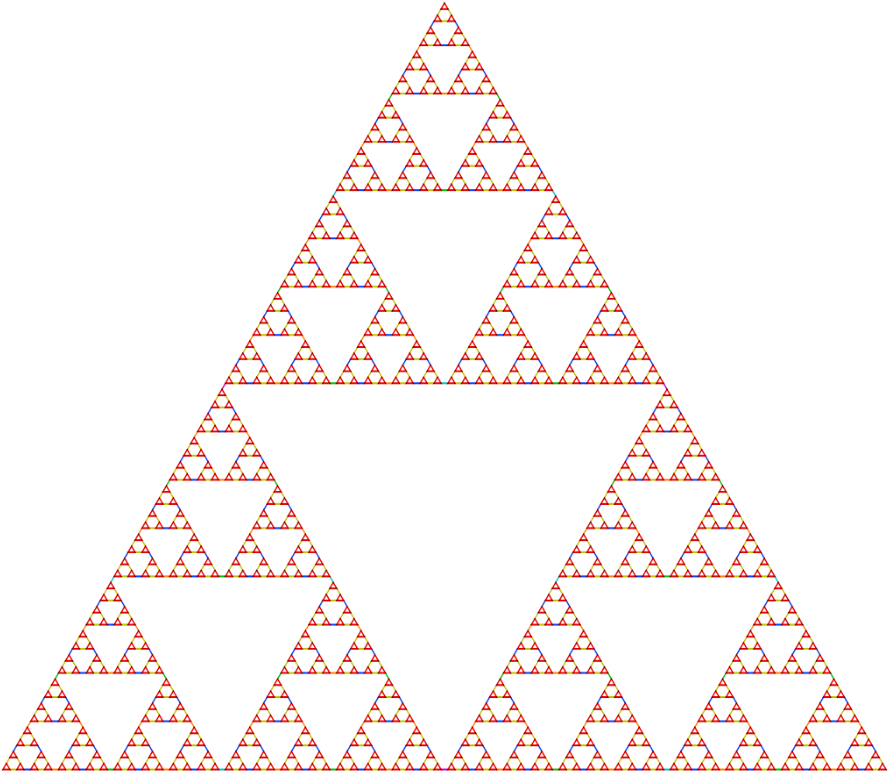The Hanoi graph $H^n_k$ is the graph with nodes representing states of a Hanoi puzzle with $n$ discs and $k$ pegs, and edges representing the various moves of the discs from peg to peg.
The Hanoi graph for $H_3^7$ is reproduced above. For $n=3$ there's certainly some similarity to Sierpiński's triangle.
My main question is - if each edge has a $1\:\Omega$ resistor, I'm wondering what we can say about the resistance metric between (say) one vertex of the triangle and another vertex of the triangle?
I'm actually secretly interested in how badly a random walk would proceed on such a graph. Even with an intelligent recursive algorithm it famously takes exponential time to "solve" the puzzle - does an unguided random walk take doubly exponential time?
I bet that, for a fixed $k$, the spectral gap might actually closes with $n$. We'd just be looping around in cycles and taking forever to move the $k$ discs from one peg to the other.

